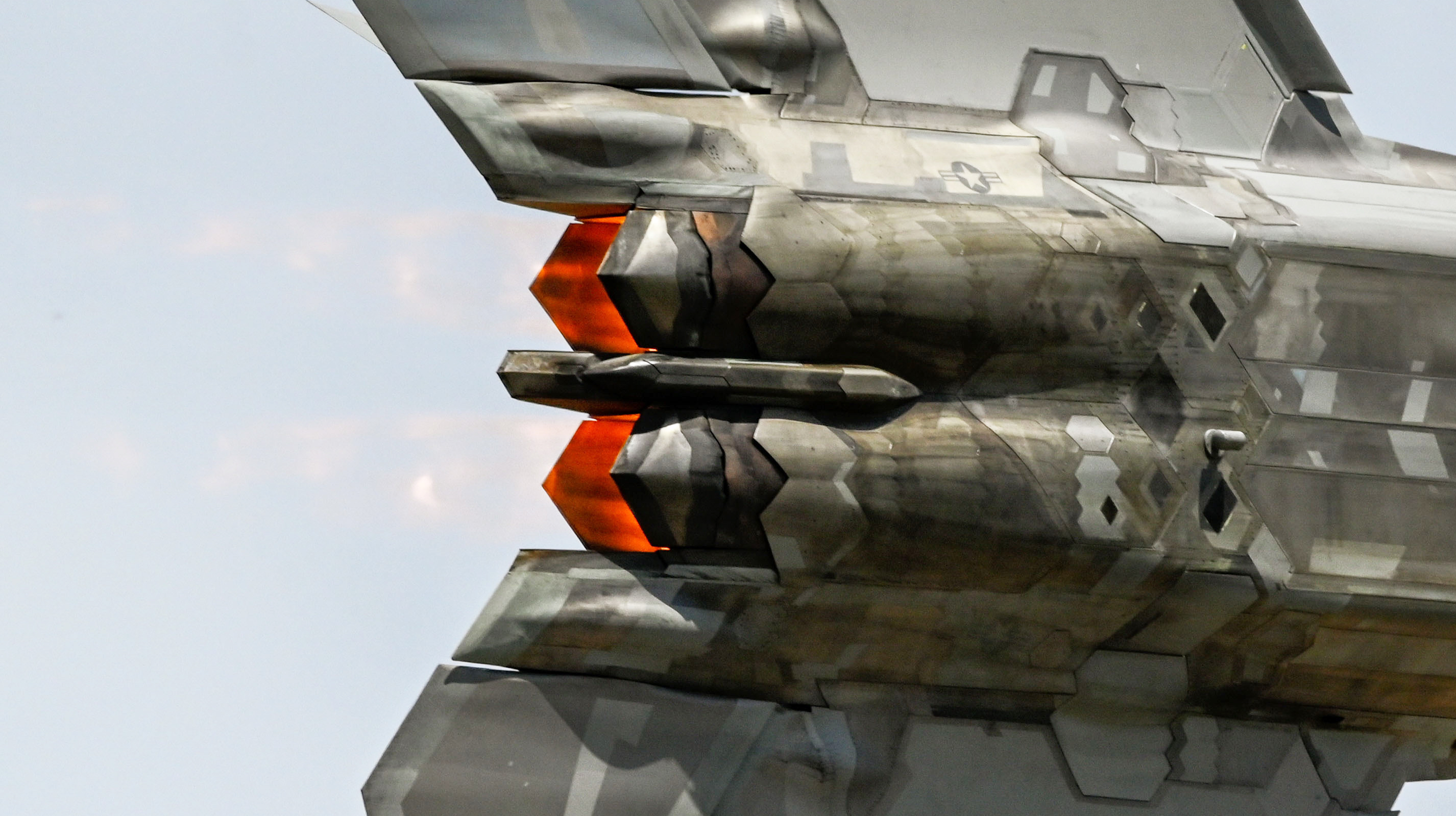China’s next-generation tailless heavy fighter from the Shenyang Aircraft Corporation seemed to have taken a months-long hiatus between its first known flight and its second. Since then, it has been seen in the skies at an increasing rate. New images and video coming out of China show the jet – referred to unofficially by a number of designations, including J-XDS and J-50 – on another recent test sortie, with clearer shots of the enigmatic stealth fighter than ever before. This includes what appears to be our first real view of its cockpit canopy.
The aircraft’s canopy has been of particular interest since the plane first appeared to the public on Dec. 26, 2024. Up until now, no images have clearly shown it. The plane’s broad nose, paired with the ground-based perspective of the photos and their low quality, previously made only what may have been a part of a canopy visible in imagery. This led to the question of whether the heavy fighter-sized aircraft was crewed at all.
Our very in-depth analysis on this aircraft, and its larger tri-engined Chengdu Aircraft Corporation counterpart, came to the conclusion that the aircraft was almost certainly crewed. With this latest imagery, we can finally put that question to rest conclusively.

One image shows a side-on view of the aircraft, providing a new perspective to analyze. Above all else, it depicts a very streamlined bubble canopy that blends closely with the upper fuselage. Canopies and cockpits can be a major hot spot for radar reflections. Minimizing their return is critical to the survivability of a low-observable crewed aircraft. In this case, for the same reasons that the canopy was so hard for us to see until now — it is difficult to view from lower aspects — also helps with keeping it out of line-of-sight of radar systems positioned below it. These can be on the surface or lower-flying aircraft. The service ceiling of the fighter is unknown, but it should be quite high in order to maximize its performance, as well as its sensor and weapons reach.
It remains unknown if the jet has one or two crew. The canopy does look quite long, which could possibly accommodate a tandem crew layout.

This side view also provides a bit better sense of scale and form of the new jet. Its diamond-shaped forward fuselage with a prominent chine line high up near the cockpit is also readily visible. The blister under the nose that could represent a faceted aperture for an electro-optical targeting and/or infrared search and track (IRST) system, similar to what’s found on the J-20 and the U.S. F-35 Joint Strike Fighter, is also visible.

Another angle from the lower rear gives us a clearer view of the aircraft’s exhausts. As expected, they are 2-D and likely thrust vectoring types, very similar to the U.S. F-22 Raptor’s arrangement. This configuration would balance low observability, performance, agility, and especially stability, considering just how unstable a tailless tactical jet like this would be.


China has been displaying its thrust vectoring engine concepts since at least 2022, with the one subscale model on the show floor at Zhuhai looking very similar to what we see in the latest imagery. We also see the unique swiveling wingtip control surfaces in action here, with the right side one highly deflected.
With each passing week, we are getting more and more detailed imagery of Shenyang’s tailless stealth fighter, just as expected. If the flights continue, we should have a much better understanding of the aircraft’s observable features by summer.
Contact the author: Tyler@twz.com.
